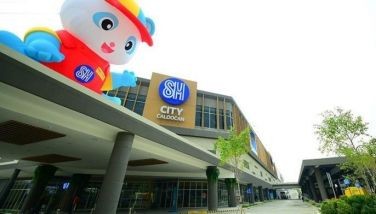Fit to a Tee
Charity need be custom fit! “We need to put the right person in the right chair to help them improve their quality of life, not give them a secondary disability,” said Elder Kim Brown of the Latter-Day Saints Charities (service arm of The Church of Jesus Christ) pertaining to 30 differently-abled people of Cebu in need of wheelchairs.
He emphasized this because, according to disability specialist Jovencio “Nonoy” Concha III of the Persons with Disabilities Advocating for Rights and Empowerment (PARE), four of the recipients refused to attend the “fitting” scheduled at the function area of the Mormon Church in Lahug.
“Gusto nila nga ihatod na lang sa ilang mga balay ang wheelchairs (They want the wheelchairs delivered at their doorstep). Dili na pwede (That can’t be). They have to go through the procedure to get the appropriate chair,” Concha said.
In a short program, it was learned last February 16 from Sister Donna Smith that it is one of the precepts of The Church of Jesus Christ that as one family, we are to serve one another regardless of religious affiliation and race.
Donating wheelchairs is LDS Charities’ move to provide accessibility and development for all most especially those persons with disabilities in consonance with the 2015 Millennium Development Goals to uplift condition of lives. For it has been taken into account that since there are so many varied reasons why a wheelchair may be necessary - either for a short term or permanently - it’s rather important to understand which type is best for the situation as well as learning safe operating procedures and the possible limitations of the chair.
This year alone, LDS Charities is looking at distributing 3,000 to 5,000 wheelchairs in the Philippines – Davao in Mindanao, Cebu in Central Philippines, Manila (in the National Capital Region), and Tuguegarao (Cagayan) in Northern Luzon.
“However, we do not want to make it appear as though it is a dole-out. We want them to feel as if they earn this; and that after the training, they are to offer 40 hours of community service. It doesn’t have to be the PWD. He can recommend a member of the family to do it for him, for as long as he can give back to his community so the act would be replicated and so everyone can benefit. It doesn’t even have to be a big act. A simple reading of a book to a child can already be considered community service,” she explained.
In addition, Concha pointed out that the three-day Level 2 Wheelchair Training Course they’ve undergone tackled on seat specifications, seat length, seat depth and height. They must see to it that the seat is fit to the client – either a PWD or an elderly person.
Impressions gathered after the training had it that the lecturers — Sis. Smith, Elder Brown, and Elder Andy Schnebly — are “expert, competent in giving clear, succinct lectures” and that the “modules aren’t draining at all.”
“We’ve looked forward to attending the lectures and in the end we’ve learned that the giving away of substandard wheelchairs may do more harm than good to the recipient, so we have to avoid any incident of a secondary disability by customizing the wheelchairs,” this was further learned.
As for seat specifications, it was learned that the LDS Charities has already distributed standard, rough-rider, and three-wheeler chairs. As for the high back, they have not recommended this, unless there is medical supervision as this is intended for those with spinal injury/deformities and, therefore, also demands specialized training of a physical therapist.
“I asked someone how he goes around the village without a wheelchair and he answered ‘by sliding on the floor and on the ground or the pavement’. I couldn’t imagine how hard it must be for him who spent most of his life sliding on the floor. So that moment he sat on his wheelchair, I understand why he cried so much because that feeling of self-esteem is already there. Never had he felt so much better,” Schnebly shared.
Brown also had his experience in Africa wherein they have to give away hard-packed seats with caster wheels which have aggressive tread for dirt roads. “Even most of the houses we’ve visited have dirt floors. Not much is paved, so we have to consider that tremendous need for the client to be mobile on rough roads,” he said.
“But I have to point out that we are using the Bell Curve graph (also referred to as ‘normal distribution’ in statistics; that which assumes that in any population there are clusters of measurements distributed from low to high with a tendency in the middle). We don’t cater to extremes. No tiny, tiny size and no extra, extra large size either. What we provide caters to the 65-70 percent of the client population,” he added.
Further, it was learned from Sis. Smith that they work with the National Council for Disability Affairs (under the Office of the President), Akap Pinoy with 100 branches advocating for PWD charity welfare services; Kampi which involves local government units in the endeavor; the ABS-CBN Foundation which has the capacity and resources to reach remote areas; as well as the Philippine Marines who are now devoting 80 percent of their work hours in peacekeeping efforts.
Forty-seven-year-old Joseph Rabanes, federation president of the Differently Abled Persons in Opol, Misamis Oriental (who was stricken with polio when he was three years old), explained that during the training, they were told to consider the footrest measurements. “Triple 90 degrees gyod na siya. Hips to knee ang pagkuha sa sukod. Kanang maabot niya ang footrest kay para dili binhuron ang client,” he stressed.
“Aside from that, we have to learn exercises like push-ups for 15 seconds every 30 minutes to avoid sores. We emphasize 90-percent cooperation from the PWD kay if dili nato tabangan atong kaugalingon, how can we be self-sustaining and self-sufficient. If magsalig ta sa gobyerno, remember nga bisan og PWD ta, we also have an obligation to our country. Dapat part of the solution ta, not part of the problem,” he said.
- Latest
- Trending























